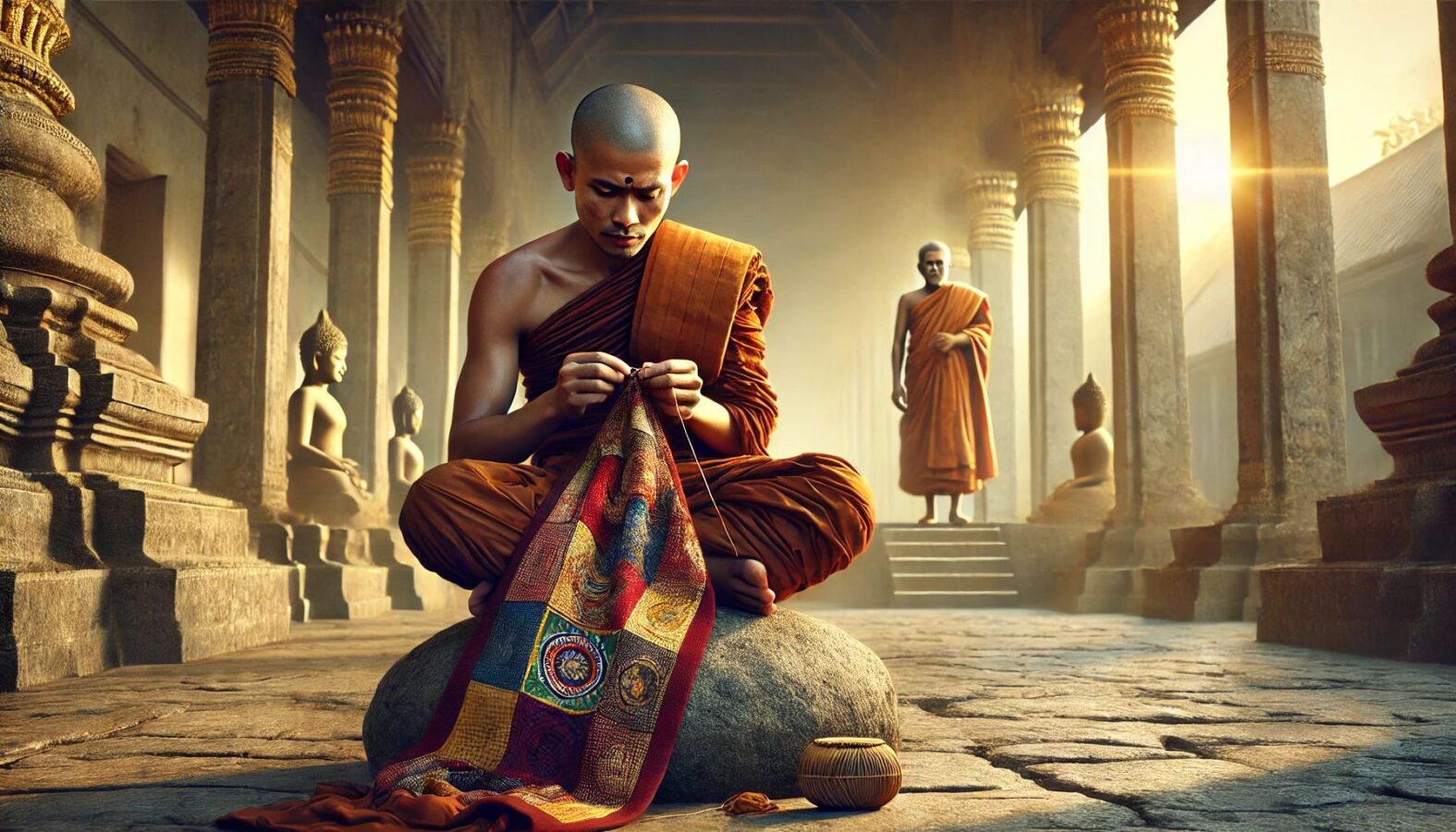
Date: 09/14/2024 09/15/2024
Location: Star Ocean Meditation Center
Teacher: Otto Huang
Dharma Talk
Yammaka’s View of Self
Once, Venerable Shariputra visited the capital city of Kosala, Shravasti, and stayed in the Anathapindika’s Park, south of the city.
At that time, there was a monk named Yammaka who had a wrong view and said to others:
“According to my understanding of the Blessed One’s teaching, once an Arahant, who has achieved liberation, dies, the ‘self’ that transmigrates through birth and death is completely annihilated and ceases to exist.”
When other monks learned of Yammaka’s statement, they went to him and tried to correct his view:
“Friend Yammaka, the Buddha did not say this. Please do not misrepresent the Blessed One or slander him. You should abandon such wrong views.”
However, Yammaka did not think he was wrong and said to the monks who came to advise him:
“Revered ones, I am correct. You are all mistaken!”
Seeing that they could not persuade Yammaka, the monks sought the help of Venerable Shariputra. Understanding the situation, Venerable Shariputra found an opportunity to meet with Yammaka.
When they met, Venerable Shariputra first confirmed what he had heard by asking Yammaka:
“Friend Yammaka, did you say, ‘According to my understanding of the Blessed One’s teaching, once an Arahant, who has achieved liberation, dies, the ‘self’ that transmigrates through birth and death is completely annihilated and ceases to exist.’? Is this correct?”
“Yes, friend, it is,” Yammaka replied.
“Friend Yammaka, let me ask you some questions, and you should answer according to your understanding.
Is the form (rupa) in the five aggregates permanent or impermanent?”
“Friend Shariputra, it is impermanent.”
“If it is impermanent, does it give rise to suffering?”
“Yes, it does.”
“If it is impermanent, suffering, and subject to change, would a wise disciple of the Buddha consider it as the self, the possession of the self, or the self within the form?”
“No, friend Shariputra, he would not.”
“The same applies to the other four aggregates: feeling (vedana), perception (sanna), mental formations (sankhara), and consciousness (vinnana). Next, friend Yammaka, is the form in the five aggregates the ‘Tathagata’ (Thus Come One) that transmigrates through birth and death?”
“No, friend Shariputra, it is not.”
“Are the other four aggregates—feeling, perception, mental formations, and consciousness—the Tathagata?”
“No, friend Shariputra, they are not.”
“Is there a Tathagata separate from the form? Is there a Tathagata separate from feeling, perception, mental formations, and consciousness?”
“No, friend Shariputra, there is not.”
“Does the Tathagata exist within the form? Does the Tathagata exist within feeling, perception, mental formations, and consciousness?”
“No, friend Shariputra, he does not.”
“Is there a Tathagata in any other place apart from form, feeling, perception, mental formations, and consciousness?”
“No, friend Shariputra, there is not.”
“Friend Yammaka, the Blessed One has directly realized and fully comprehended the Dharma. In that reality, there is no clinging, no conceptual proliferation. Why do you say, ‘According to my understanding of the Blessed One’s teaching, once an Arahant, who has achieved liberation, dies, the ‘self’ that transmigrates through birth and death is completely annihilated and ceases to exist.’? Is this correct?”
“No, friend Shariputra, it is not correct.”
“Friend Yammaka, if that is the case, why did you say so before?”
“Friend Shariputra, it was out of ignorance that I said so. Now, having heard your explanation, I have abandoned my wrong views and realized the true Dharma.”
“Friend Yammaka, if someone were to ask you now, ‘What happens to an Arahant after death?’ how would you answer?”
“Friend Shariputra, I would answer: The form, feeling, perception, mental formations, and consciousness of an Arahant are all impermanent. Because they are impermanent, they are suffering. The suffering of an Arahant has ceased, it is extinguished, cooled, and gone forever.”
“Well said, well said, friend Yammaka! That is the correct way to answer. Why? Because the form, feeling, perception, mental formations, and consciousness of an Arahant are all impermanent. Being impermanent, they are suffering. All impermanent, suffering things are subject to birth and death and cannot be regarded as permanent or annihilated.”
With this explanation, Venerable Shariputra helped Yammaka to attain the pure vision of the Dharma.
Venerable Shariputra then gave Yammaka a simile:
“If someone has enmity with the head of a large household and wants revenge, he might infiltrate the household as a lowly servant, enduring hardships and flattering the master. Once he gains the master’s trust and the master becomes complacent, he will kill the master in one strike.
Friend Yammaka, the enemy had decided to kill the head of the household from the start, but the household head was unaware of it. Is this correct?”
“Indeed, friend Shariputra.”
“If the household head had known from the start about the enemy’s intentions and taken precautions, he would not have been killed. Is this correct?”
“Yes, friend Shariputra.”
“Therefore, friend Yammaka, foolish and ignorant people regard their five aggregates as permanent, stable, healthy, as self or belonging to the self. They cherish and protect them but are ultimately harmed by their attachment to the aggregates, just as the household head was killed by the enemy disguised as a servant.
Wise disciples of the Buddha observe their five aggregates as afflicted, like a boil, a thorn, or a murderer. They see them as impermanent, suffering, empty, not-self, and do not cling to or identify with them. By not clinging, they realize Nibbana, knowing that birth and death have ended, the pure life has been established, what should be done has been done, and there will be no further existence.”
With this profound simile and explanation, Venerable Shariputra further helped Yammaka to eliminate all defilements and attain liberation.

